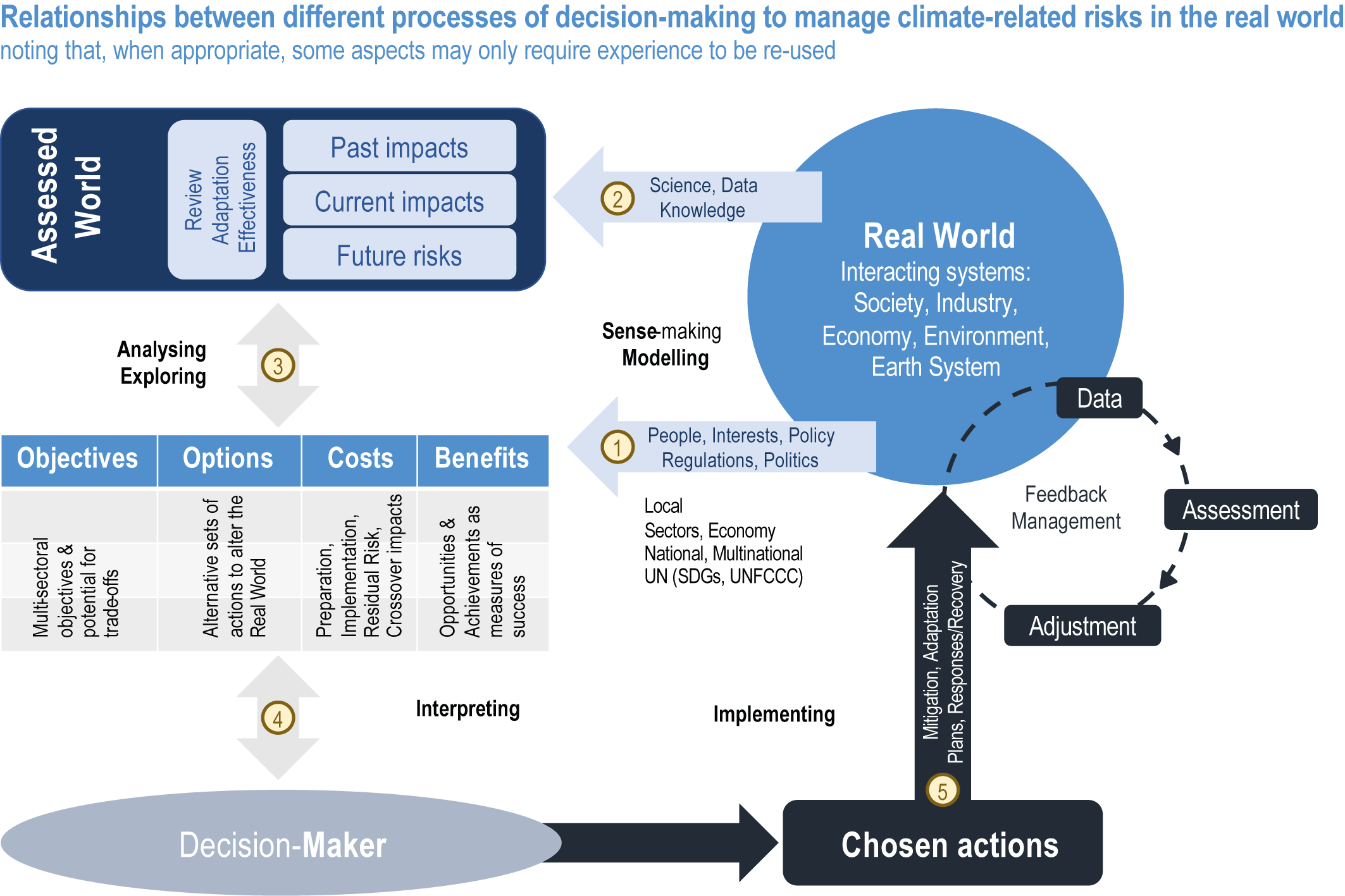Figure 17.7
Figure caption
Figure 17.7 | Relationships between different processes of decision-making to manage climate-related risks in the real world, noting that, when appropriate, some aspects may only require experience to be re-used. (1) Formulation of risks of concern and accompanying policies and objectives for managing those risks, forming prescriptive models for the decision maker. (2) Knowledge, understanding and observations of the real world are used to assess past and current impacts and future risks using descriptive models, based on the perspectives and prescriptive models arising from (1). If not well formulated from other experience, processes in (1) and (2) interact to make sense of the world and what needs to be done. In iterative management, (1) and (2) also form the basis for monitoring, reviewing and evaluating effectiveness of adaptations. (3) Use of decision-support and decision-analytic tools to appraise costs and benefits of different options for ameliorating future risks. The double-headed arrow indicates where two-way interactions occur between different activities (likely to be iterative, feedback and nonlinear processes); modelling and assessments are repeated and revised in tandem with the planning and evaluation of options, based on interactions with the policymakers and stakeholders. (4) The decision maker, which may be a group of people, interacts with the evaluation of options (two-way interaction) and interprets the efficacy of the options and the implications for the real world, ultimately choosing one or more actions to satisfy the policy objectives to manage the risks. (5) Implementation of the actions in the real world, which may be once-only actions or instigation of a feedback management system that enables ongoing adjustments to meet objectives.
